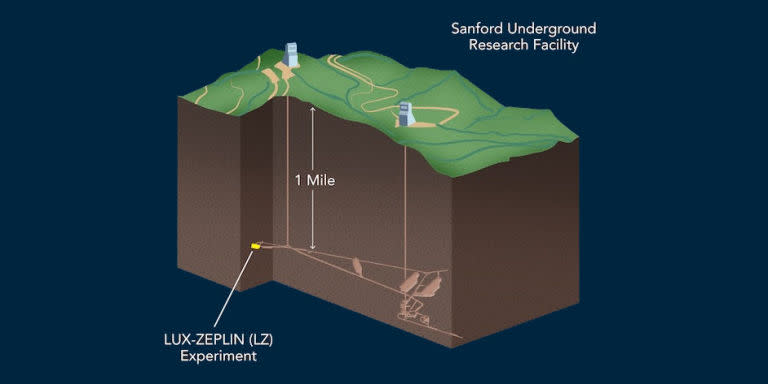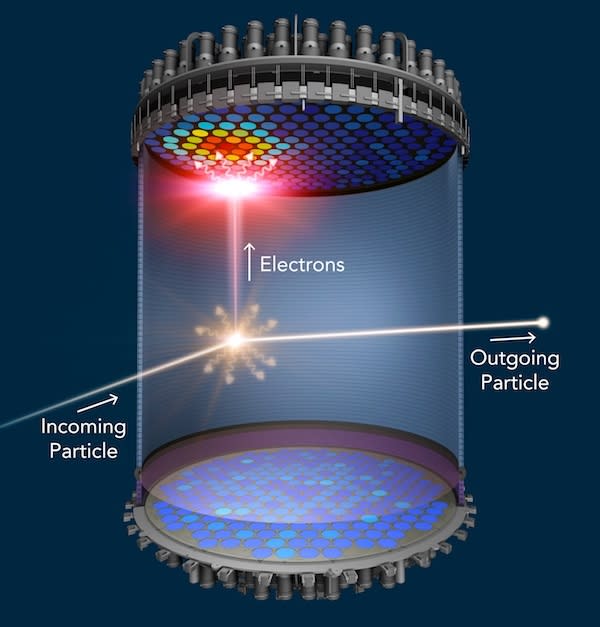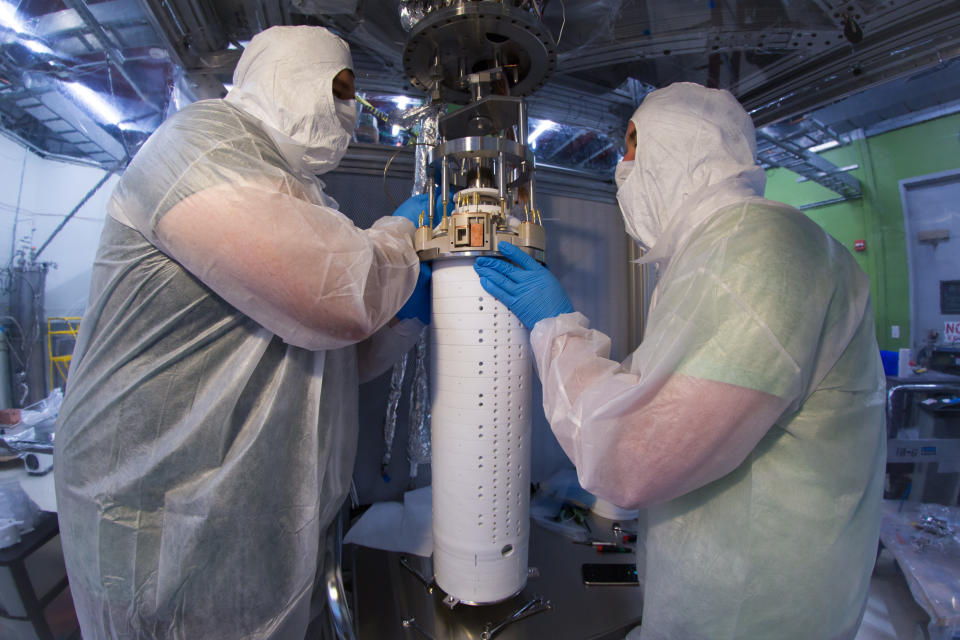Physicists Hope to Find Dark Matter With 10 Tons of Liquid Xenon a Mile Underground in an Abandoned Gold Mine

In an abandoned gold mine one mile beneath the town of Lead, South Dakota, engineers and physicists with the University of Wisconsin-Madison are working to build a chamber that holds 10 tons of liquid xenon. They hope that in the subterranean realms of the mine, where the experiment will be protected from solar particles and cosmic rays, they will be able to detect dark matter for the very first time.
Dark matter is a perplexing thing. It was first theorized in the 1930s when astronomers realized that galaxies could not have the necessary gravity to retain their structures from just their visible matter-stars and planets and dust. Something else must be binding the galaxies together, preventing them from coming apart. This unseen matter has never been directly detected before, only inferred from gravitational models, but astrophysicists believe that there could be as much as five times more dark matter in the universe than visible matter. UW-Madison wants to find out for sure.

The experiment in the gold mines of South Dakota is called LUX-ZEPLIN, or LZ for short. It expands on the previous Large Underground Xenon experiment (LUX) and the ZEPLIN dark matter program. The idea is to detect a particle of dark matter as it interacts with a xenon atom, causing a chain reaction in the chamber that will produce a burst of ultraviolet light and release a flurry of electrons. Immediately after the liquid xenon lights up, gaseous xenon above it in the chamber will react with the released electrons and emit a second, brighter pulse of light. The physicists working on the project describe it as a "bell" that will ring when influenced by a particle of dark matter.
"Dark matter particles could be right here in the room streaming through your head, perhaps occasionally running into one of your atoms," said Duncan Carlsmith, a physics professor at UW–Madison, in a press release.
Earlier this month, the Department of Energy approved the final stages of construction for the LZ in the gold mine, officially called the Sanford Underground Research Facility. In the meantime, researchers are working with a smaller prototype device to ensure that when the big LZ goes online in 2020, it won't be susceptible to interference.
To make sure nothing disturbs the massive vat of liquid xenon except dark matter, the team is constructing two outer chambers that are designed to detect and remove any contaminating particles. The chamber filled with 10 tons of liquid xenon will sit inside that, and more than 500 photomultiplier tubes-vacuum tubes that are ultra-sensitive light detectors-will monitor the LZ for any activity. If something other than dark mater disturbs the xenon's slumber, the photomultiplier tubes should be able to determine that it was a false alarm.
The dark matter detector is being assembled in a clean facility at UW-Madison's Physical Sciences Laboratory that has been scrubbed of radioactive materials like radon. A storage system is being developed to prevent any radioactive material from leaching into the xenon chamber when it is transported and installed, and a system is also being designed to constantly remove any gas that leaches out of the xenon chamber's lining.

Once everything is installed in the subterranean mine, and the experiment goes online, all that will be left to do is wait. The physicists will be looking for weakly interacting massive particles, or WIMPs, which are hypothetical particles thought to be the building blocks of dark matter. WIMPs are thought to pass through normal matter without any trace most of the time, but physicists believe they can occasionally bump into ordinary particles.
"In a year, if there are no WIMPs, or if they interact too weakly, we'll see nothing," says Carlsmith.
The LZ will remain switched on for at least five years, however, and hopefully it will succeed in detecting WIMPs for the first time, or otherwise rule them out as the ethereal substance that makes up dark matter. Other experiments at the Wisconsin IceCube Particle Astrophysics Center, as well as projects in Italy and China, are also being conducted to search for the elusive direct evidence of dark matter. UW-Madison physicists are also using the Large Hadron Collider in an attempt to detect dark matter that is created during high-energy particle collisions. The race to be the first to find dark matter is in full swing.
If we can find and measure this substance, we will attain a greater understanding of the universe than ever before. It's very possible that dark matter makes up more than 25 percent of the entire cosmos, and once we discover the specific properties of the material, it could unlock secrets that have long remained hidden from us.
Source: University of Wisconsin-Madison
You Might Also Like

